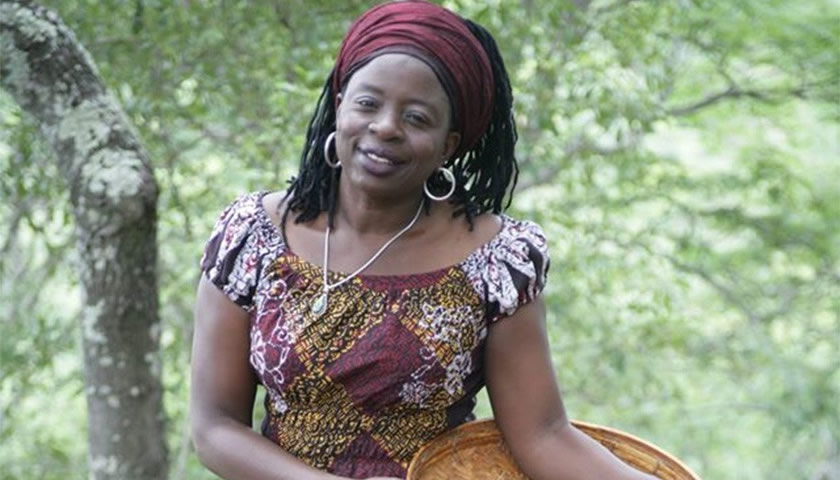Our disappearing traditional food
Dr Sekai Nzenza on Wednesday
AT the village primary school before independence, we did not just learn how to speak English; we were introduced to English food even though it was not there. The food was described in the English books donated to us by the Anglican missionaries. Our teacher, Miss Rwodzi read the books to us. Among the books we loved most was Enid Blyton’s “The Famous Five”. The heroes in the book were a group of English children who went on many adventures and picnics in countryside England.
We sat there, on the dusty floor, listening and wondering what their food looked like. Our mouths salivated when Miss Rwodzi described a picnic basket full of ham and tomato sandwiches, tinned sardines, currant buns, biscuits, meat pies, boiled eggs, shortbread, radishes, Nestlé milk, ginger beer, tins of pineapple chunks and squares of chocolate. When they were not having a picnic, the English children sat on a big dining room table at home and ate whatever they wanted from a whole selection of food.
I imagined myself fully educated one day, ndafunda zvikuru, finding a job in the city, getting married and setting the table with forks and knives. At my family’s dining room table I was going to serve everything straight out of Enid Blyton’s books. There would be some ham, roast beef, fried eggs, sandwiches, cheese, bacon, carrots, cakes, buns, jelly, hamburgers, chips, salads, crusty bread with butter and jam.
For drinks, there was going to be no water on that table but copious quantities of lemonade and ginger beer, exactly what the English children and their parents in the book drank.
At breakfast my children and some of the visiting relatives from the village would drink as much tea as they wanted with plenty of milk and many teaspoonfuls of sugar.
On that table I might even allow the village fried buns, mafetikuku, that my mother made for us on special days. And maybe a big bottle of Fanta. Once my table was set, there would be no room for sadza or any of the village primitive dishes my grandmother Mbuya VaMandirowesa cooked.
In those days, long before the donors arrived in the village to give us food handouts as they do now, we had plenty of food. We knew of no other foods or tastes other than the varieties we grew or gathered from the hills and forests. We did not go hungry. Our sadza was never just made from maize but from sorghum, mhunga, zviyo, rapoko, millet and mapfunde.
In the dry season, we went to the anthills to catch the red ants, those red insects with horns, majuru. In the wild forest we gathered delicious worm like delicacies, magandari, harati and masinini. The boys went hunting for rabbits and mice while older men climbed the Hwedza Mountains with dogs hunting for big buck and pheasants. Sometimes we spent the day in the valley competing on how many zvikundyu, makurwe and grasshoppers we could catch and bring home to Mbuya.
Most times, we ate vegetables. My mother and all the village women cooked various types of mushrooms (whose English names we did not know) from chihombiro, nhedzi, huvhe, tsvuke tsvuke, nzeve and matindindi.
And there were varieties of vegetables too; mudyakari, mowa, derere remashizha or okra, munyemba, muboora or pumpkin leaves. When she was in the mood, Mbuya VaMandirowesa, my grandmother, woke up very early and spent all morning preparing rupiza, the roasted and ground split chick pea with peanut butter sauce. We hardly ate meat. Occasionally my grandmother, Mbuya ordered a beast to be slaughtered at her leisure, mombe yemadiro.
On the days I did errands for Mbuya I stayed the night with her. She kept a small clay pot, mbiya, next to the fire all the time. In that pot there was always something tasty to eat reserved for my grandfather Sekuru Dickson. I was still young enough to sleep next to Mbuya on the reed mat. Late at night, I heard Sekuru gently open the door. Soon as he sat on the bench, Mbuya abused him. “What do you want? Go back to your wives. Have they not learnt how to cook good food for you yet?” Sekuru just sat quietly on the bench, smoking his rolled tobacco, waiting for Mbuya to finish her ritual abuse.
I pretended to be sound asleep, so I did not have to fetch firewood from outside and rekindle the dying embers. Sekuru then presented a small pot of beer, kapfuko, to Mbuya. After drinking one or two gourds of beer, Mbuya roughly nudged and ordered me to get up and quickly warm Sekuru’s mbiya.
Inside the mbiya was always a surprise dish. Sometimes it was a smoked rabbit in peanut butter sauce with a touch of chilli or a nice village road runner chicken cooked slowly or it was smoked and dried mice, or just dried beef, chimukuyu, kanyama kasina muto. During the rainy season, Mbuya prepared those tastiest of crickets (or insects), tsambarafuta or the white ants, ishwa, delicious grasshoppers, makurwe, mandere or zvikundyu.
Mbuya and Sekuru then ate together and talked about serious affairs of the village compound first, and then they gossiped and joked like old friends. I sat by the fire and listened. Mbuya told him some of the secrets she had already shared with her best friend and sister-in-law, Mbuya VaMakumbi.
But she left out all the juicy bits about whose wife was sleeping with whom. The following night Sekuru would return to enjoy the food from the mbiya again. And it was always there waiting for him. Sekuru no longer expected any other “food” from Mbuya, because age said that time was now past.
When some of the older girls in the village got married, Mbuya took them aside and gave those lessons.
Not only did she instruct them on matters of sexual intimacy, she advised them on how and what to cook for the husband.
She said a woman should quickly learn what her husband liked and also give him surprise dishes in a small pot, mukambiya.
My grandmother, Mbuya VaMandirowesa has since departed to be with the ancestors. She did not live to see the fruits of independence and the big houses and dining room tables we now have.
All those village dishes she once cooked have hardly made it to the urban dining room table. Sadly, our desire for English food continues to define what we eat, where we eat and in some houses, who cooks the food.
Our traditional food has been undergoing a gradual decline long before we read Enid Blyton’s books.
When the first British settlers came here, they hardly borrowed from our food, but we appropriated theirs thinking everything English was modern and therefore right. What ever happened to creative diversity in food?
For how long shall we continue to systematically and slowly destroy the contents of our mbiya? The healthy kind of food we once ate will continue to disappear, unless we begin to civilise it and accept that it is deeply rooted in our memory. Village food will always remain a part of who we are. A return to traditional food, combined with the various grains, meats and vegetables we have borrowed from the British and elsewhere can only enhance our tastes.
The centrality of food is an expression of cultural identity, history and memory. Revisiting the tastes of Zimbabwe’s traditional foods is not just about food, it is about cultural recovery.
Sometimes, I long to bring back the authentic and delicious taste of food inside that old village clay pot.
A good millet sadza, sadza rezviyo, eaten alongside a well cooked village road runner chicken with a touch of fresh chili and nothing else brings back the disappearing taste of real food.
Dr Sekai Nzenza is Chief Executive Officer of RioZim Foundation. She writes in her personal capacity.







Comments